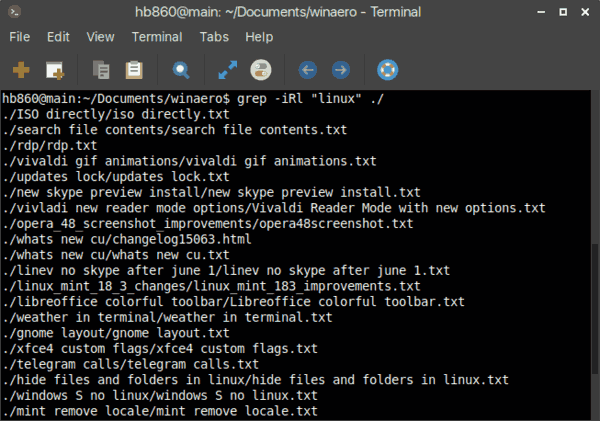

- Windows command line search for text in files recursively how to#
- Windows command line search for text in files recursively manual#
- Windows command line search for text in files recursively windows 8#
Now you can see that FIND brought up one line that matches the search string, which means it is working. find /i "martin hendrikx" C:\Users\Martin\Desktop\exercise.txt Let’s try it again, but this time, let’s add the “/i” switch so that FIND ignores the case of your search string. The reason you have no results is because FIND is looking for an exact match to your search string. You will notice that no results showed up. find "martin hendrikx" C:\Users\Martin\Desktop\exercise.txt Remember to put your search string in quotation marks and change the path to match the folder where your documents are saved. Now that you have your three documents downloaded, we will enter a command to search the text file called “exercise” for the words “martin hendrikx.” Use the command shown below. Scenario 1 – Search a single document for a string of words.
-Files-in-Command-Prompt-Step-4-Version-3.jpg)
Next, right-click on it and then press “Run as administrator.” While you don’t need to open an elevated command prompt window, it will help you to avoid any pesky confirmation dialog boxes.
Windows command line search for text in files recursively windows 8#
Open the start menu in Windows 7 and 10 or open the search function in Windows 8 and search for CMD. Now you will need to open up an elevated command prompt window. For the purposes of this tutorial, we will put all three text documents on the desktop. Once you have downloaded these three documents, you can copy them into any folder on your computer. These documents each contain a paragraph of text with a few similar word groupings.
Windows command line search for text in files recursively how to#
Like every tool in windows, you will need to know how to enter your commands.
Windows command line search for text in files recursively manual#
When you are ready to end the manual text input, you can press “Ctrl + Z.” We will discuss this more later. If you don’t specify a path, FIND will ask you for text input or may accept text piped from another command. This can be as broad as listing a drive or as specific as defining a single or multiple files.


/i – This switch tells find to ignore the case of text you are searching for./n – This switch shows the numbers that correspond with the lines./c – This switch tells the find tool to count how many lines contain your search terms./v – This switch will show any lines that don’t contain the string of words you specified.As with every command prompt based tool in Windows, there are certain switches and parameters you will need to know in order to use the tools effectively.


 0 kommentar(er)
0 kommentar(er)
